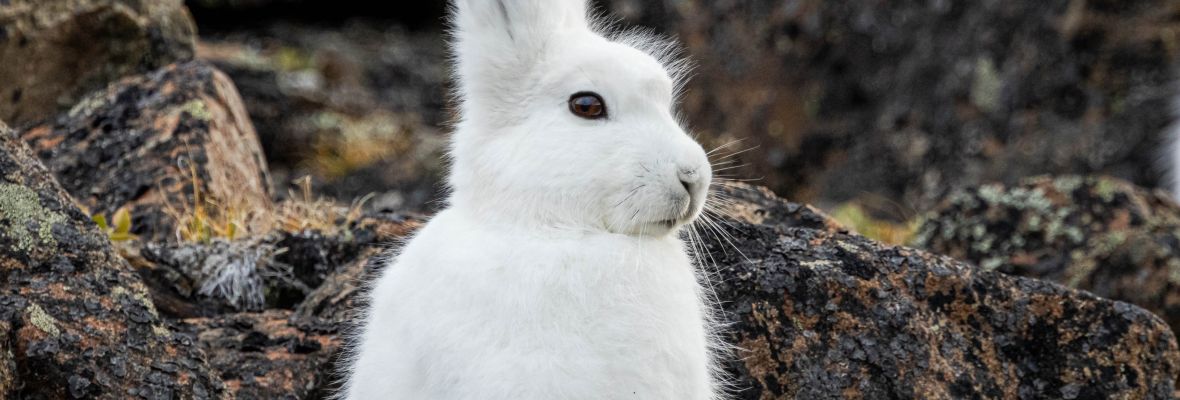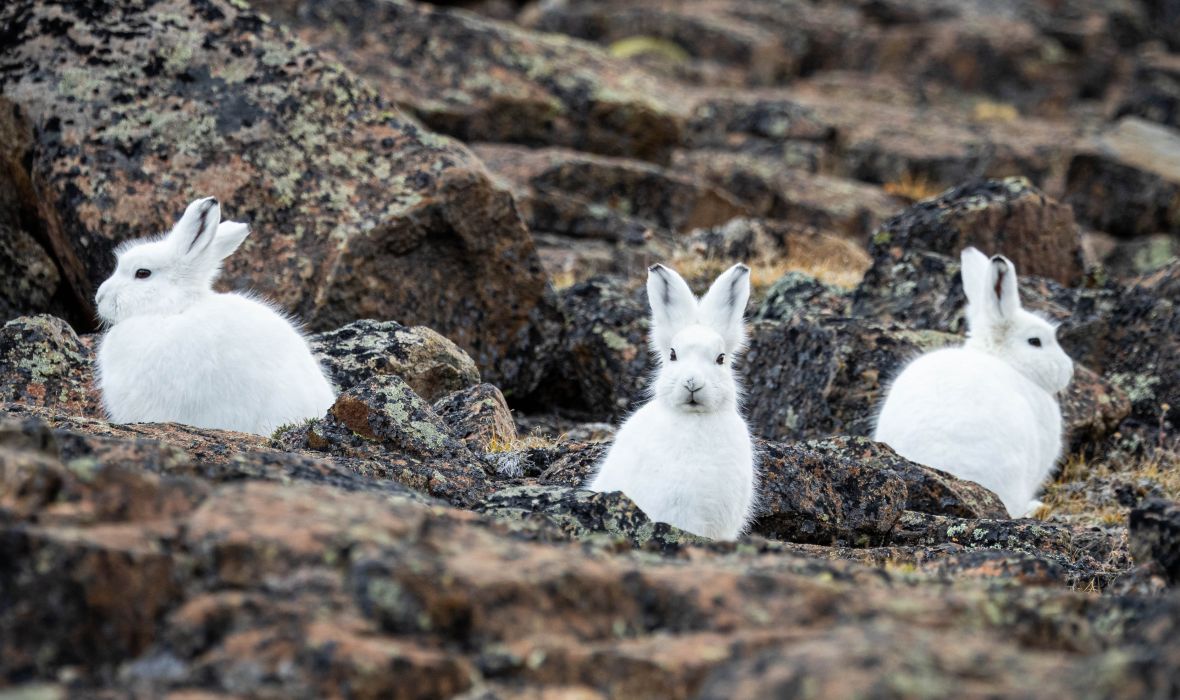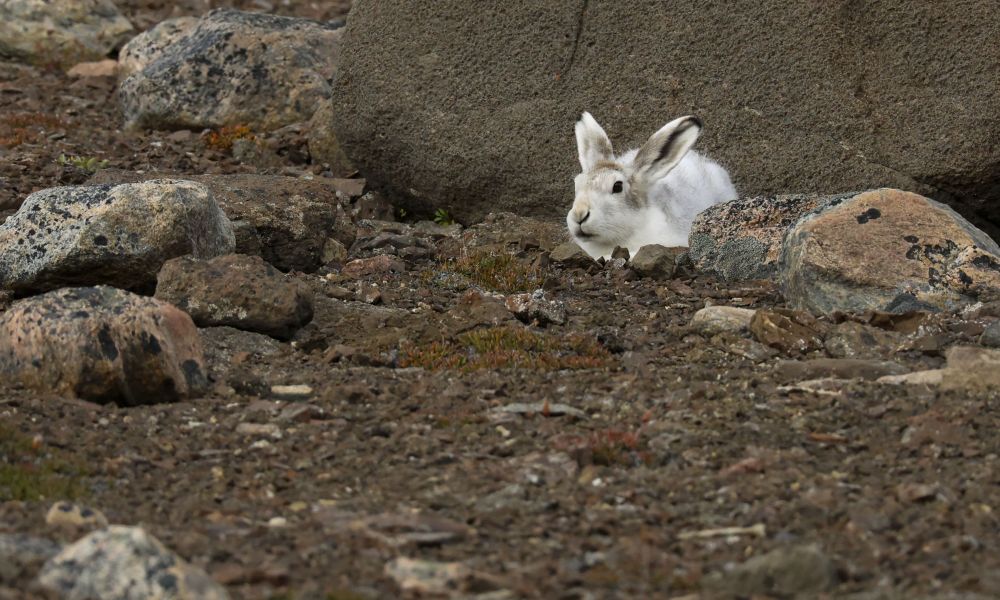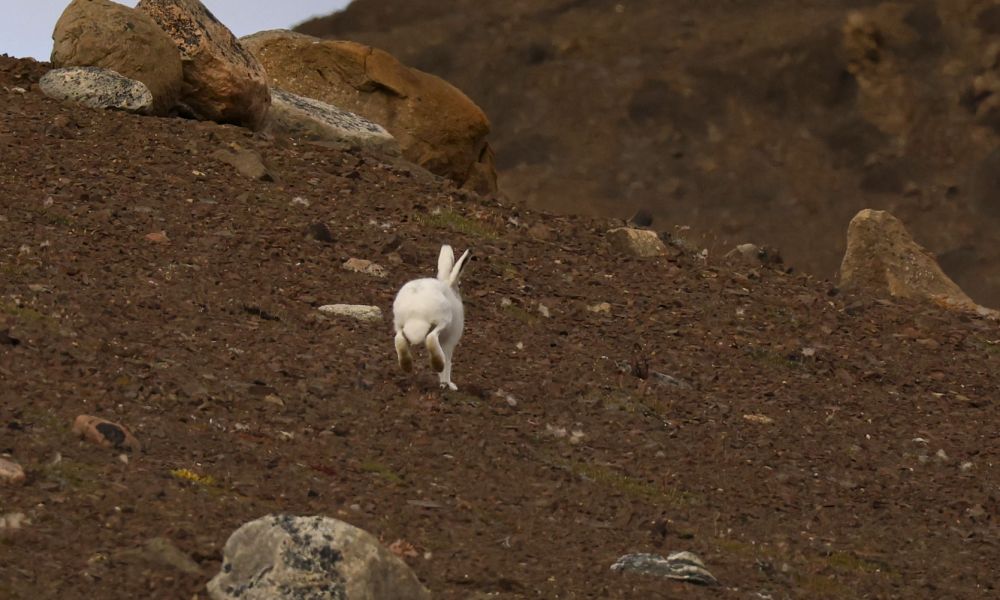How big is an Arctic hare?
Females are typically slightly larger than males, and an adult Arctic hare size is around 3–6 kg (6.6–13.2 lbs) and 48–70 cm (1.6–2.3 ft), making them a relatively large hare breed. An Arctic hare baby weighs approximately 0.1 kg (0.22 lbs) and has a length of about 15 cm (0.5 ft).
Where does the Arctic hare live?
These fluffy animals can be found in the Arctic tundra regions, particularly in Greenland and northern Canada. They were historically introduced to Svalbard but are now extinct there.
How does the Arctic hare adapt to the tundra?
Perfectly adapted to tundra environments, arctic hare characteristics include:
- Short ears, tail, and nose to minimise heat loss
- Thick, insulating fur to keep warm in extreme cold
- Long and powerful hind legs that can reach speeds of up to 60 km/h (37 mph)
- Seasonal coats, with their fur turning white in winter and grey-brown in summer
These features are highly beneficial for these small animals to escape against predators and navigate the rocky tundra landscape.
What does an Arctic hare eat?
Arctic hares are herbivores, and their diet changes depending on the season. During summer, the arctic hare diet consists of berries, buds, bark, leaves, and roots, while in winter, when food becomes scarce, they consume woody plants, lichens, grasses, and mosses.
What Eats an Arctic Hare?
They are the primary food source for many animals in the tundra food chain. Examples of Arctic hare predators include the Arctic fox, snowy owl, gyrfalcon, and grey wolf.
Hare vs Rabbit: What’s the difference between a rabbit and a hare?
The difference between hares and rabbits is that hares are generally larger, faster, and have longer legs and ears than rabbits. Rabbits often burrow and give birth underground, with their young born blind and hairless, while hares are born fully furred, with open eyes, ready to move soon after birth. When faced with predators, hares prefer to run away, unlike rabbits, who tend to hide from them. Lastly, hares cannot be domesticated, whereas some breeds of rabbits can be.
Is the Arctic hare endangered?
The IUCN Red List states that Arctic hares are not endangered and are classified as 'Least Concern'.






